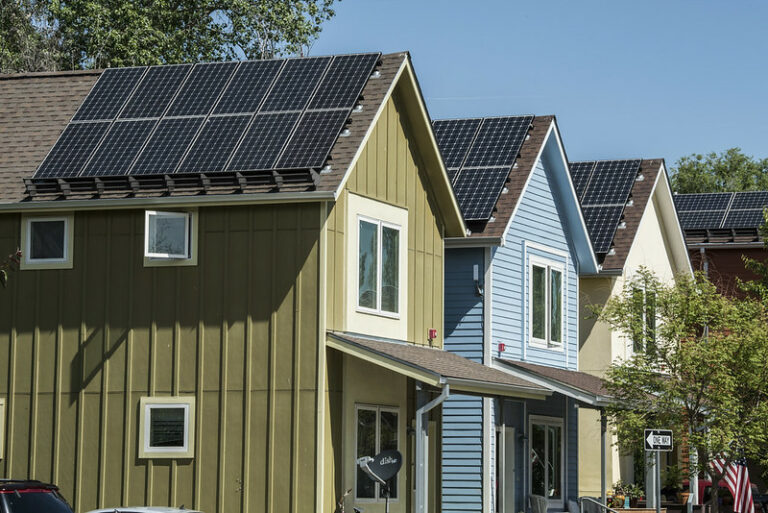Peer-to-peer solar and social rewards: evidence from a field experiment

Download
The transition to a cleaner and more resilient economy requires an increased use of renewable energy. The global market for solar power has expanded dramatically over the last few decades. Now, as the market becomes mature, new niches need to be identified. One of these could be the use of ‘peer-to-peer solar’, which offers an opportunity for households who cannot have solar panels fixed to their own homes to access solar energy from their neighbours.
The authors of this paper hypothesise that because using a neighbour’s solar power is an invisible form of pro-environmental behaviour, it will mean less reward in the form of social or peer approval, reducing the attractiveness of peer-to-peer solar. They tested this by advertising peer-to-peer solar in two Massachusetts cities through Facebook, in partnership with a company that offered a randomly selected sub-sample of customers the possibility to share reports of their green behaviour online.
The data confirm the hypothesis. Interest in peer-to-peer solar power increased by about 30% when ‘green reports’ were mentioned in the advertisements. However, in the case of more extensive Facebook campaigns, the algorithm started reaching out to an audience considered ‘less relevant’, and they were less responsive to the messaging. Therefore, the study also provides a methodological contribution on how to run field experiments through Facebook ads in the presence of a heterogeneous audience and an optimising algorithm.
Key points for decision-makers
- The peer-to-peer solar power model responds to the fact that not all homeowners can have a solar power system, either because they are financially constrained or because their home is not suitable. It can also aid renters who have an interest in accessing solar energy but whose energy choices are made by their landlord.
- The authors ran randomised campaigns using Facebook advertisements in the Massachusetts cities of Cambridge and Somerville in 2018 and 2020 in collaboration with the local authorities and in partnership with a start-up company in the United States active in peer-to-peer solar, MySunBuddy. MySunBuddy agreed to offer to a randomly selected subsample of customers the possibility of receiving and sharing ‘green reports’ online with their friends and network, which would document their use of solar energy. The ads were seen by several tens of thousands of people.
- The objective was to test whether interest in peer-to-peer solar increases when prospective customers are informed that they will be given the option to share their ‘greenness’ with other people through online social networks, thus making an otherwise invisible behaviour visible and observable. ‘Observability’ is known to be an important driver of pro-social behaviour, including in the adoption of new technologies: people may be more likely to behave in a certain manner if they see others around them doing so, and, as shown in this study, if others around them see them doing so.
- The authors also tested whether people were more likely to show interest in peer-to-peer solar in the presence of frames emphasising the fact that both cities were active in transitioning towards a cleaner economy, or in the presence of frames emphasising the importance of being a frontrunner.
- They found that social media users were 30% more likely to show interest in peer-to-peer solar and respond to the ads when informed that they would be receiving shareable green reports displaying their greenness. The green reports appeared to be most effective in combination with the community frame.

